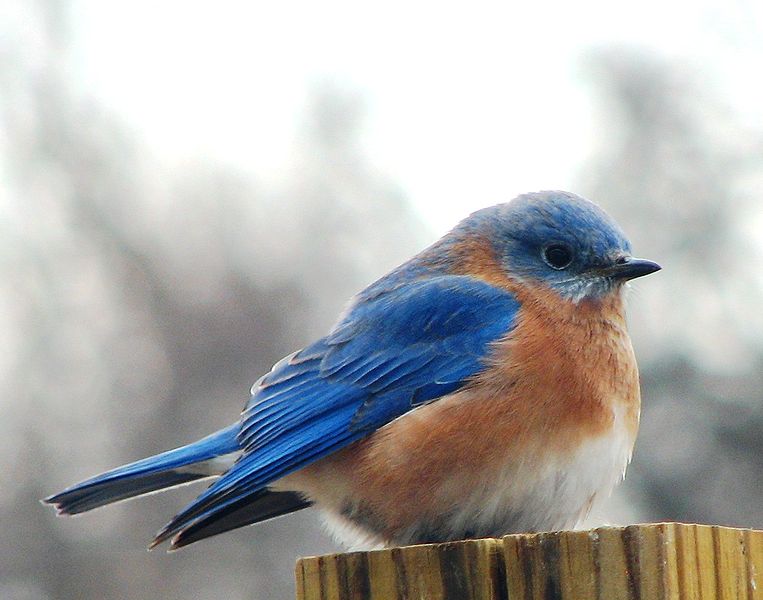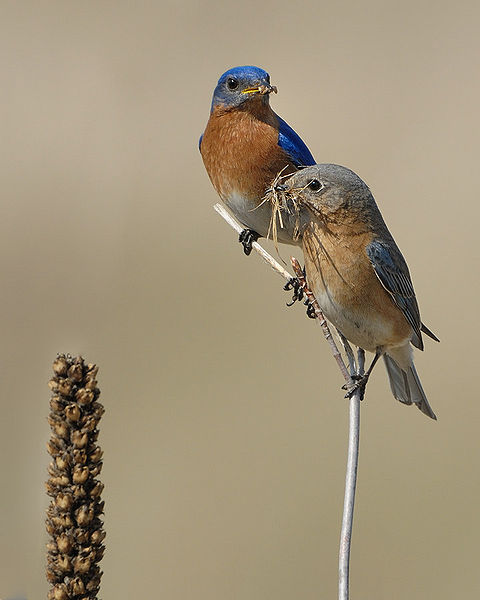eastern bluebirdSialia sialis
Identification:
The Eastern Bluebird is bigger than a sparrow and smaller than a robin. The male has a dazzling blue back and wings with a rusty colored breast and white underparts. The female is grayer with blue wings and lighter coloring on the breast. The babies are blue, gray, and rust colored with eyes that appear especially big because of their white outer rim. Behavior: This is a ground foraging species; they will often perch in the open and flutter to the grass to nab insects. Eastern Bluebirds sing a soft, throaty and tender song. In summer they primarily eat insects, while in winter they add fruits to their diets. Cavity nesters, Eastern Bluebirds suffered from disappearance of nesting sites until a revival of bluebird box programs helped bring them back. What brings it to the SBG? Food, cover, nesting sites. Bluebirds have been seen at the SBG in the dead of winter, feeding on berries. In summer they perch on the fence by the horse pasture and fly down to the grassy area to feed. In Summer 2017, several years after nesting boxes were installed in the habitat, a pair of Eastern Bluebirds successfully raised fledglings in one of the boxes! When can I see it? Year-round. |


